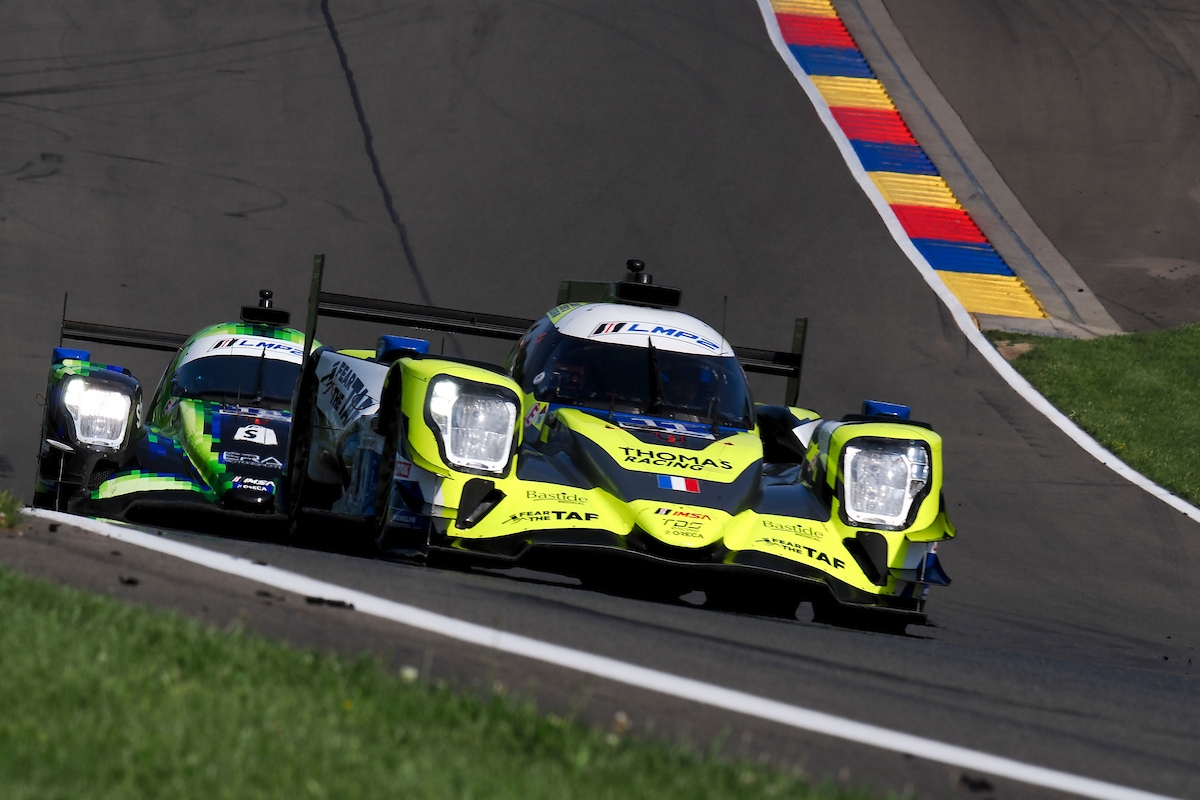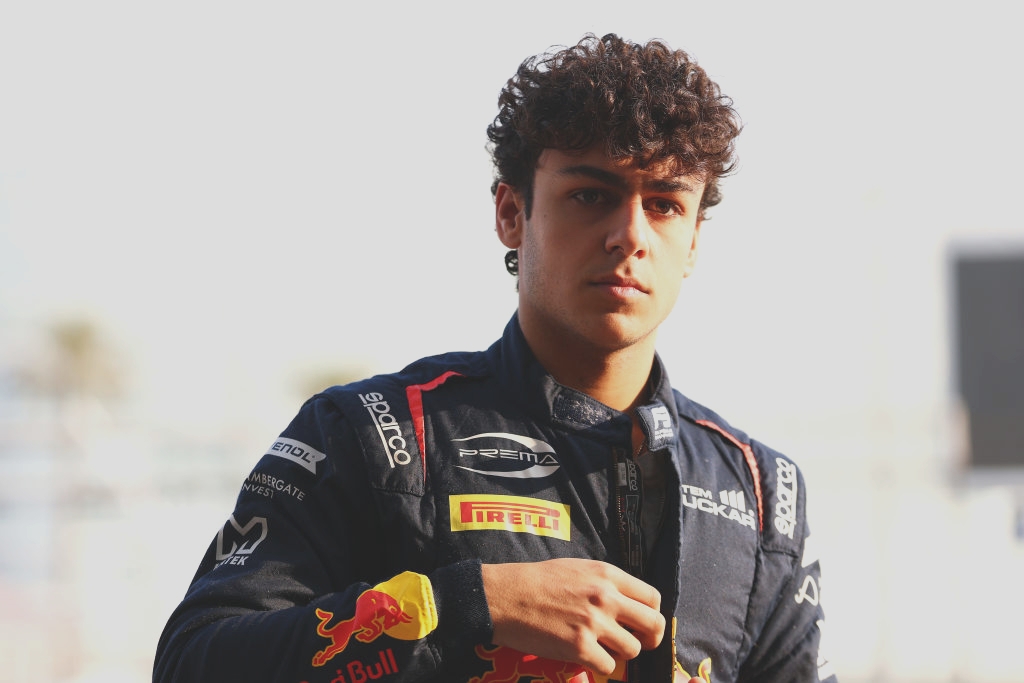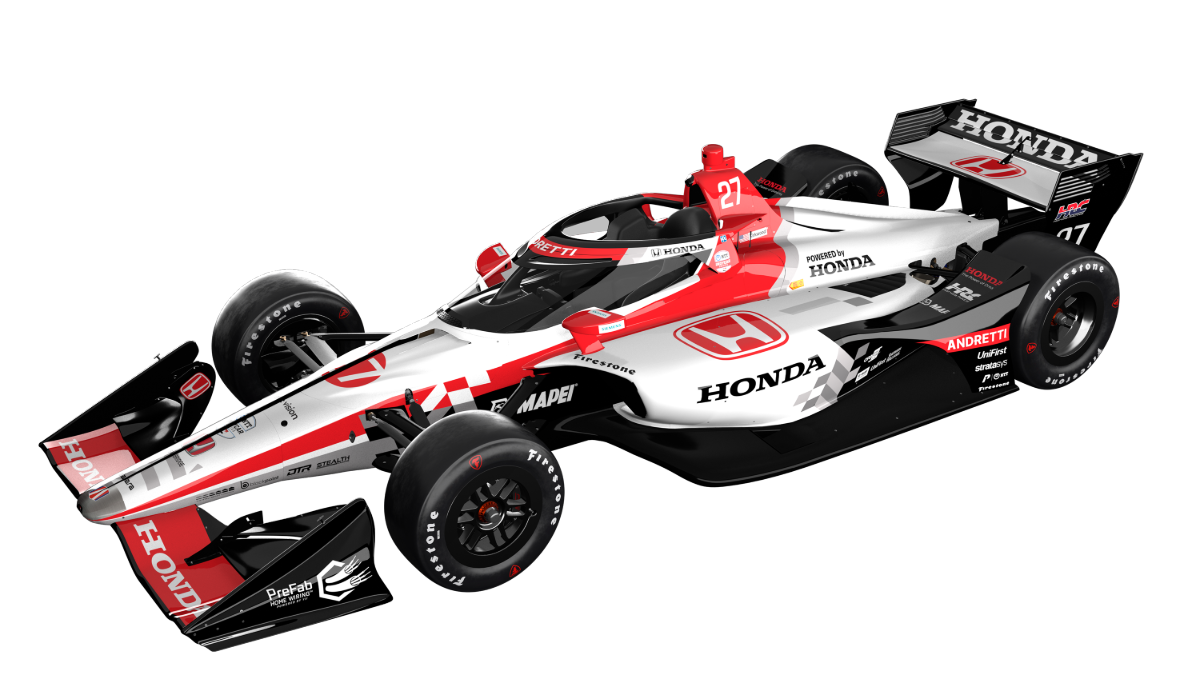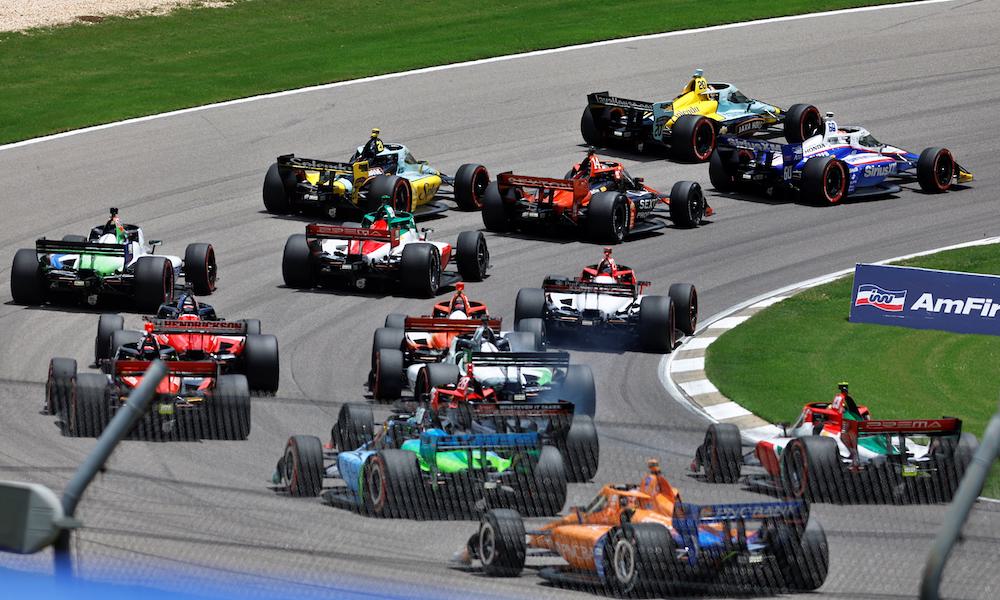
ShareThis is disabled until you accept Social Networking cookies.
A letter to Roger Penske: ‘Color confusion’ and the quest for young IndyCar fans
Dear Roger,
I know you’re busy, but I respectfully ask that you hear me out. You preside over the most competitive racing series in the world, but I’m a little worried. I’ve known you for many years, and ask that you allow me to air this personal concern about confusing young IndyCar fans.
I’ve heard many times about your dad taking you to the Indianapolis Motor Speedway when you were 14 years old. I bet you left with a favorite driver. Someone or some aspect of the day captured your attention and changed your life. (Maybe the noise of the engines back in the day?)
The same thing happened to me when I was 12 years old. My dad took me to see Irish driver Sidney Taylor race a Brabham BT8 in Dunboyne, a small village on the outskirts of Dublin city. They were simple days back in 1965, with unique bespoke race cars that all looked and sounded different. It was easy to grab onto a favorite driver or car, and have life-changing moments. Part of any promoter’s mission today is to provide such moments for future motorsports lifers.
The real purpose of this letter, Roger, is to let you know that instead of young fans being impressed enough to be life-long race fans like you and me, my fear is that they are being confused. Your new chief marketing officer Alex Damron is adamant that young fans need to be reached – this is now called "youthification." This is great, but alas, I think current day marketers might be making the plight more difficult by confusing young fans (and a lot of older ones, too). So-called marketers have created years of confusing IndyCar color schemes. This may seem trivial, Roger, but I think it’s big. I know you want to grow the series, but I implore you to take a look at the basics of emotionally connecting with young fans before too many more seasons pass.
Today, capturing the imagination of 14-year-old fans is a lot more challenging. The NFL, NBA and MLB, and others, are all courting the younger set. Imagine the confusion if NFL teams and players turned up in a different colored uniform each weekend. There would be outrage, and I’m sure the NFL would never allow such confusion. But IndyCar allows it – and yes, I know that some of the teams are just doing anything possible to pay their bills. I understand that, but satisfying the CFOs of these teams does come with a price tag. Sit back for a minute, Roger, and let me give you a few examples of IndyCar Confusion 101.
Imagine a current-day 14-year-old Little Roger attending his first Indy 500 with his dad and cheering on Simon Pagenaud winning for Team Penske in the bright yellow Menards-backed car. Imagine Little Roger running to the gift shop to buy his new favorite model of the winning car and a t-shirt. Then think about him pestering Dad to take him to Detroit the following weekend to cheer on his new favorite driver. (Does this sound familiar?).
When he gets to Detroit, there is no yellow Menards car and Dad is trying to explain that although he thinks that Pagenaud might be there, he’s not in the Menards car anymore and tells his son to look for a totally different color – and Dad has no idea what the color is. I’m pretty sure Little Roger is more than a little frustrated and disappointed.
Now imagine Josef Newgarden winning the Indy 500 in the beautiful Shell car. The scene of him jumping the fence and running into the crowd was stuff of legend. That’s exactly what a sport needs to bond fans to a particular athlete. Everyone became instant fans of Josef and the Shell car that day. The new fans with their newly acquired Newgarden t-shirts and model cars might go to the next race in Detroit full of enthusiasm, only to be disappointed that their favorite Shell car was not there. Dads explain that although the Shell car is not there, they could probably still find Josef somewhere, but he was not sure where or what color the car might be.
One year in Detroit, Roger, Graham Rahal changed the color of his car between Saturday’s race and Sunday’s. Talk about actively building brand confusion around the team, driver and series. This is what really alerted me to the fact that current day marketers are selling sponsorships that are beneficial to the short-term health of the team, but detrimental to the long-term health of the series.
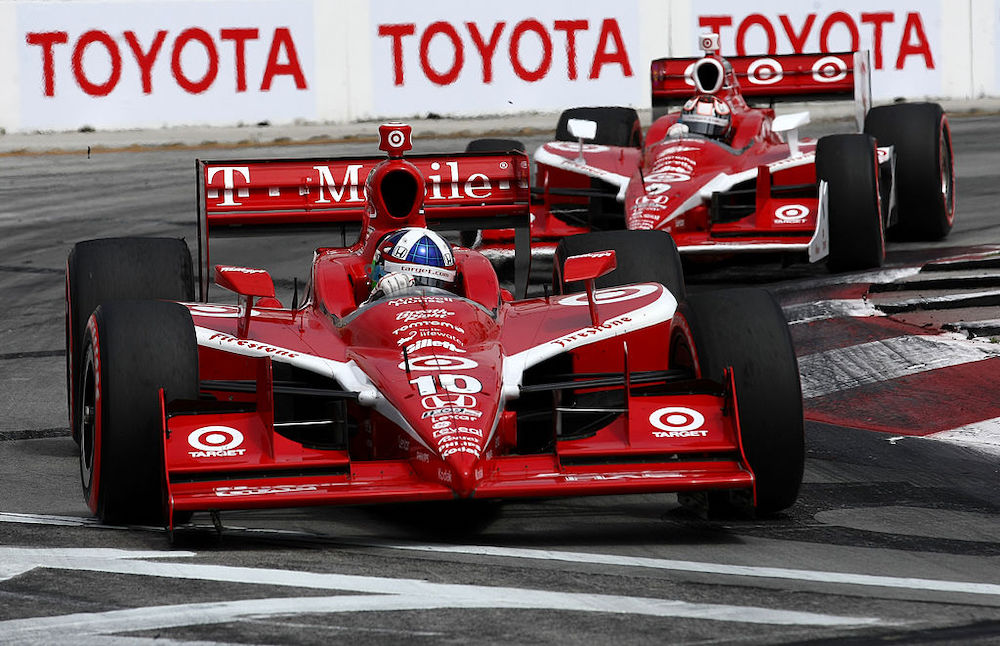
In Toronto 2023, two Team Penske cars, Newgarden’s and Will Power’s, were representing two different sponsors. At speed on track, both black and white liveries looked identical. Even NBC’s lead announcer, Leigh Diffey, said on during the Sunday morning warm-up session that they were going to get confused. If a professional commentator was getting confused, spare a thought for the 14-year-old Little Rogers!
At the same race, Scott McLaughlin turned up in a light blue car – after he was in a red car – after he was in a yellow car. With this color confusion, it’s no wonder McLaughlin (as good as he is) has no established brand in America despite being a multiple race winner.
Surely someone in a marketing department saw this blunder in Portland 2022. McLaughlin was in a red and white Odessey Battery car, but his hero shot on the race telecast had him in a yellow Pennzoil driving suit. Even if Little Roger could not go to this race, he was still being confused while sitting on his couch.
The same thing happened when Scott was in a dark-colored Freightliner-sponsored car – his hero shot on the IndyCar app and on Peacock showed him in the yellow Pennzoil driving suit again.
These examples might seem trivial, Roger, because we’ve grown so accustomed to the confusion, but I think it’s a roadblock to youthifying the fan base. And it gets worse.
After Marcus Ericsson won the Indy 500 in a red Huski Chocolate car, he turned up at Mid-Ohio in a green Ridgeline car. I’m sure Little Roger was looking at Dad and scratching his head.
Worst of all, it might have been Portland, where Ericsson turned up in Scott Dixon’s colors. At the same race, IndyCar champion Alex Palou went from his familiar blue NTT car to a green Ridgeline one. Newgarden had been racing PPG blue but turned up in a black and white Hitachi car. Rahal, who has no familiar branding whatsoever, expected people to know which of the two Quartz Oil-liveried team cars was driven by himself or Jack Harvey. At this stage, I can imagine Little Roger in an infield asking Dad to take him to a baseball game.
At Barber Motorsports Park in 2023, Romain Grosjean fans were confused when he appeared in a dark blue Delaware Life-sponsored car. Even his familiar helmet color scheme was gone. He was largely unrecognizable. Later in the season, Grosjean switched to Alexander Rossi’s NAPA branding livery. Again, these examples might seem trivial, Roger, but I don’t think so. If you make it difficult for fans to become fans, they won’t become fans. How can anyone explain all of this to 14-year-old Little Rogers whose interest you want to capture for life?
At the Indy GP that year, Marcus Armstrong appeared in Palou’s green car. At the September IMS road race, Armstrong appeared in a red and white car promoting the IU Cancer center. NBC announcer James Hinchcliffe said live on the air, “It’s going to be a bit confusing having two Ganassi red and white cars.” If professionals cannot tell the cars apart, how can Little Roger actively follow the races and become a lifelong fan?
Perhaps 2024 was by far the most confusing season for IndyCar fans. During the live telecast of the Nashville race, NBC Sports showed a great promotional video of Josef winning the Indy 500 in the Shell car. However, his hero shot at the start of the telecast showed him dressed in a black Hitachi uniform, and just after the Shell promotional video aired, the TV director cut to a live shot of Josef on track – now in a red Astemo car – and when he stopped in the pits, his crew were dressed in black Hitachi colors. Little Roger needed three color charts that weekend with explanations to follow what was going on.
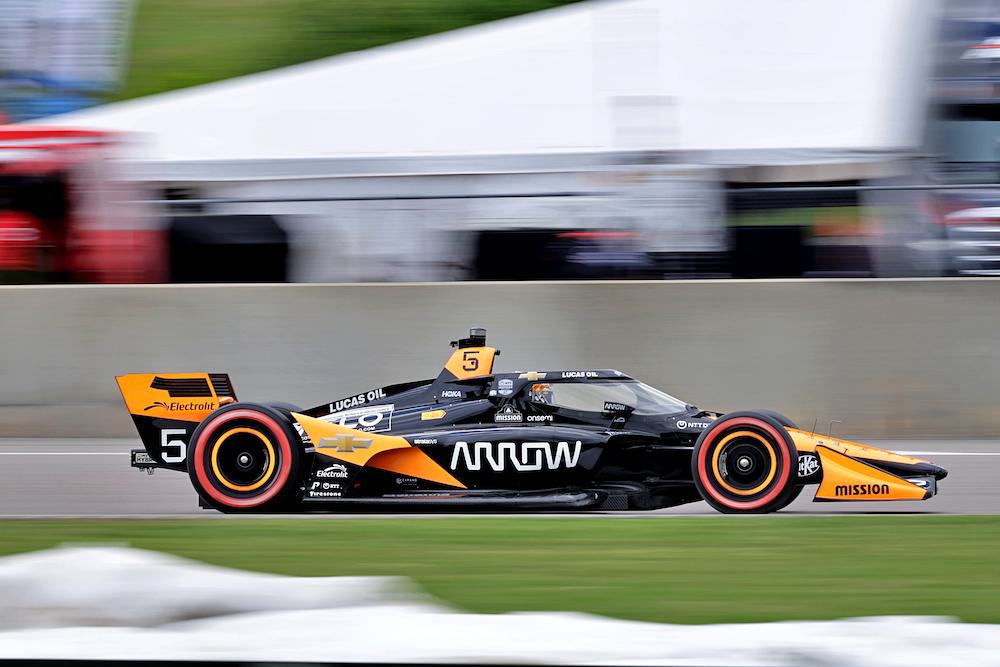
During the live Indy 500 qualifying show there was a McLaughlin promotional video with him dressed in a black XPEL drivers suit, when he was actually driving the familiar yellow Pennzoil car. Newgarden’s promotional video during the same show promoted him dressed in a black Hitachi uniform when he was actually driving the red/yellow Shell car. This was IndyCar Confusion 101, Roger, and no one saw it. Where are the marketers? What were they looking at?
In the same show, Rasmussen disappeared out of the Guy Care car and team owner Ed Carpenter dropped himself into it. This was after building the brand around Rasmussen. Young people should not have to work so hard to become fans. Capturing a fan, Roger, and keeping them for life, takes a lot more than selling a t-shirt and giving away hero cards.
In Milwaukee 2024, both Newgarden’s and McLaughlin’s cars were unrecognizable on Sunday. You got a well-deserved sponsor check, but the fans were left confused. Josef’s fans were even more confused when they tried to at least find a familiar helmet color scheme, only to discover that Josef was now wearing a different helmet design. Roger, this is crazy stuff.
As the 2024 season went on, the confusion only deepened. In Detroit there was no familiar Pennzoil car that had such a high profile at the Indy 500 the week before. It was replaced by the blue colors of Gallagher Insurance. There was no familiar Shell car for Newgarden, but instead a red Astemo livery that looked like an old Ganassi Target car. Rahal was in an iPacket-sponsored car. Armstrong was in an unfamiliar orange Red Root livery. Later at Laguna Seca, Rahal showed up in a gold-liveried Mobil 1 car in celebration of the team’s 1000th start.
If marketers are responsible for building the brand and sales departments are responsible for selling the sponsorships, it looks like most team sales and marketing teams are one and the same. Therefore, the confusion they create becomes excusable.
Ten years ago, no driver had a significant social media platform, but now, every driver is communicating to thousands and in some cases in Formula 1, millions. This is both good and bad. Good that the reach is so direct and personal; bad if the branding is confusing.
Now, just for fun, think of a well-branded current IndyCar driver. It’s a tough ask. Your CEO Mark Miles is aware of the need to get some household names in IndyCar, but this type of confusion makes that task harder. You have one of the fastest and most charismatic drivers in Newgarden, but he has a multi-colored confusing brand – and few outside of IndyCar recognize him, even on a race weekend.
I would love you and your business development team to spend the rest of this season pondering the content of this letter. Have your marketing team meet with the sales team and have them understand what new steps need to be taken to build youthification. Get some creative people to look beyond what has become familiar. There is no point touching new fans if they have to work so hard to become fans that they inadvertently end up being confused. This is different thinking, Roger – a different approach to how the sport is commercialized – and the recent television figures suggest that the sport needs fresh thinking.
Consider new rules specific to brand building. Maybe teams in future can have specific team colors and be proud of those colors? Sponsors then get added to that branding color. There is a reason that Ferrari is the best-known racing brand in the world. A big part of that reason is the color red. Arguably, the second-best known brand in Formula 1 is McLaren. A big part of that is the papaya orange color. The best-known team brand in IndyCar is now McLaren – because of the papaya color. Can you imagine that no one in the paddock would know a Team Penske car (the greatest team in our sport), unless it was specifically pointed out to them? To me that just doesn’t compute.
You might cast this letter off your desk, Roger, but I think there is a problem that needs to be addressed. Bernie Ecclestone absolutely understood familiar color branding for teams and drivers in Formula 1. If nothing changes, my fear is that IndyCar could forever be in a short-term commercial scramble. You are in a position to stop the color confusion. Work with teams to construct commercial deals a little differently. Maybe the big teams who are more commercially stable can set this new standard. Dissuade the one-off liveries if possible, knowing that there can always be exceptions for certain circumstances, and especially for smaller teams. Build brand consistency and then loyalty, especially with the big teams who are mostly featured on television. Reach out to Little Roger and show him that he will not have to work hard to become an IndyCar fan. Make it easy for him to recognize and explain the sport to his friends. Familiar colors matter – that’s the very premise of successful marketing.
Thanks, Roger. By the way – I still have my "Effort Equals Results" Penske coin that I got in 1994. I show it at every keynote across the country. Your influence even outside our racing paddocks has been immense.
Respectfully,
Derek Daly
ShareThis is disabled until you accept Social Networking cookies.
Derek Daly
Derek Daly's vast racing resume includes 49 F1 starts with Hesketh, Ensign, Tyrrell, March, Theodore and Williams, a podium in CART, and a fourth at Le Mans in the iconic Silk Cut Jaguar XKR-9LM. Since his retirement from driving he has juggled roles as a TV commentator, author and public speaker.
Read Derek Daly's articles
Latest News
Comments
Disqus is disabled until you accept Social Networking cookies.
